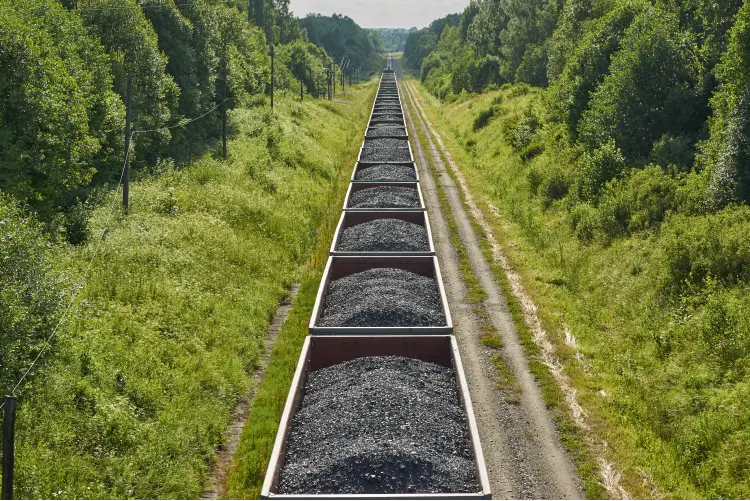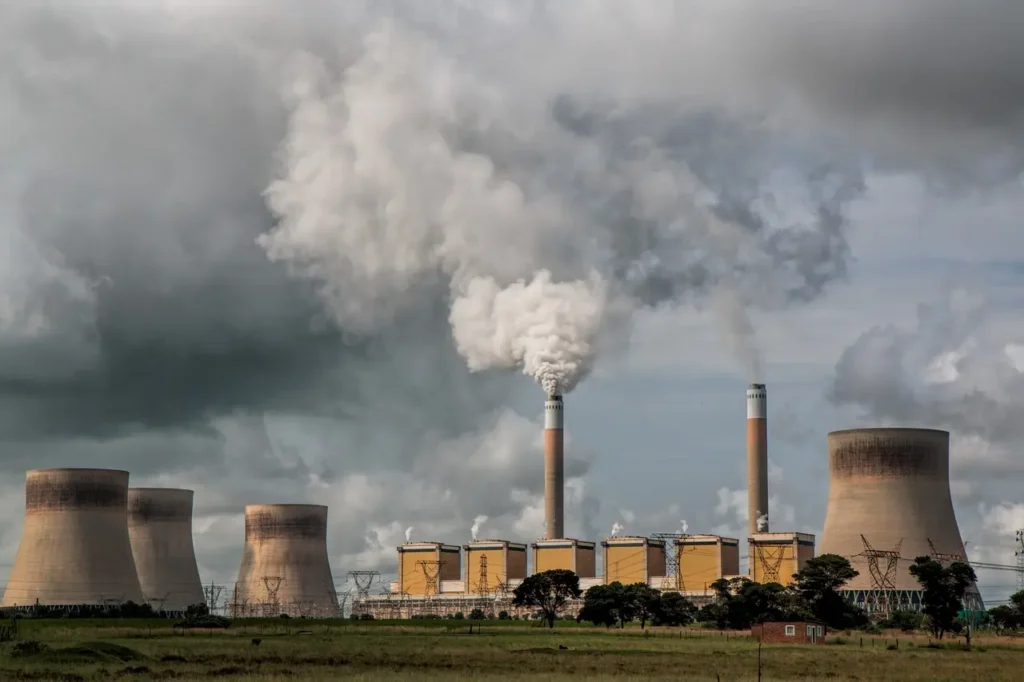Environmental Impacts of Coal
5 minute readCoal energy has powered industries for decades, but its environmental impact raises serious concerns
Home > Learning Center > Energy Production > How Coal Is Formed
4 minute read • Last update August 2024

Coal is a sedimentary rock with a black or brownish-black color. It is found in underground deposits called coal beds or coal seams. Coal is primarily composed of carbon and hydrocarbons along with varying amounts of other elements, chiefly hydrogen, sulfur, oxygen, and nitrogen.
Due to it’s chemical makeup, coal is highly combustible. As a result, coal is used around the globe as an energy source to fuel electricity generation. The burning of coal produces significant pollutants and greenhouse gases that contribute to global warming.
Coal is formed from the remains of plants that lived millions of years ago. It starts with the plants absorbing energy from the sun through a process called photosynthesis. Over time, when these plants die, their remains get buried under layers of soil and other debris.
Over millions of years, the plants are transformed into coal through a series of biological, chemical, and physical changes. Factors influencing the formation of coal include:
This formation process, known as coalification, occurs in several stages:
Coal formation begins in swampy areas where waterlogged conditions prevent the decay of dead plant material. Over time, layers of plant debris accumulate. These areas are often referred to as peat bogs or peat swamps.
359 to 299 million years ago during the Carboniferous period on Earth, climactic and geologic conditions were just right for the formation of peat bogs and marshes.
In those low-lying waterlogged regions, peat begins to form as plants die and sink beneath the surface. Decomposition is slower underwater compared to dry land due to the low oxygen content. Because plants were decomposing slower, this allowed for the development of thick layers of plants.
As new plant material adds to the layers, the weight and pressure increase on the lower layers. This pressure, along with microbial activity (in the initial stages), begins to compact the material, driving out some of the water and gases. The material at this stage is called peat, a brownish-black material that contains about 60% carbon.
As the plants layered on top of each other, geological changes, rising water levels, and precipitation continued to bury the peat under further layers of sediment. As the peat layers get buried deeper, they were subjected to increasing temperature and pressure. This stage significantly slows down the microbial activity and starts the chemical transformation of peat into coal.
Buried peat undergoes further chemical changes and physical compaction due to the heat and pressure. This process increases the carbon content and decreases the oxygen, hydrogen, and nitrogen content. Moisture content also decreases during coalification. Over millions of years, this process transforms peat into coal.
Peat first turns into lignite coal, the first true type of coal. As the materials are buried deeper with ever increasing pressure and temperatures, lignite further transforms into subbituminous and bituminous coal. These types of coal are harder, more compact, and have a richer carbon content. Finally, if the conditions are right, bituminous coal can metamorphize into anthracite coal, the highest quality type of coal.
Coal is categorized into four main types, ranks, or classifications of coal. The rank of coal is determined by how long it has undergone the formation process.
Coal that has been under the earth for longer is generally a higher quality with a higher carbon content and heating value. The four main types of coal in order of quality from highest to lowest are anthracite, bituminous, subbituminous, and lignite.
As tectonic movements and other geologic processes push coal seams deeper underground, they are subjected to even greater pressures and higher temperatures. Higher pressure and hotter temperatures can enhance the quality of coal, which is why older, deeper coal is a higher quality when mined.
Depth beneath the surface, pressure, and temperature are not the only factors that contribute to the quality and characteristics of the resulting coal. Other factors include what the original plant or animal material was and the conditions of its original burial.
Coal we unearth today in underground or surface mines may have began forming over 300 million years ago during the Carboniferous period, a time when the earth was covered in swampy forests.
Coal is not considered a renewable resource because it takes hundreds of millions of years to form. That means we can consume more coal than the Earth can produce and hypothetically can eventually run out of coal to burn.
Graham Lumley, Digital Marketing Manager at BKV Energy, leads digital and traditional marketing strategies, focusing on educating Texans about the state's deregulated energy market. With over 8 years of marketing experience, he creates content to help consumers understand and save on their energy bills, bringing a fresh and dynamic approach to the industry.

Coal energy has powered industries for decades, but its environmental impact raises serious concerns

Get $50 off your electric bill!
Use code BKVEJOINUS50
Enter your zip code to shop BKV Energy's affordable, fixed-rate Texas electricity plans. Use the promo code for $50 off your electric bill.